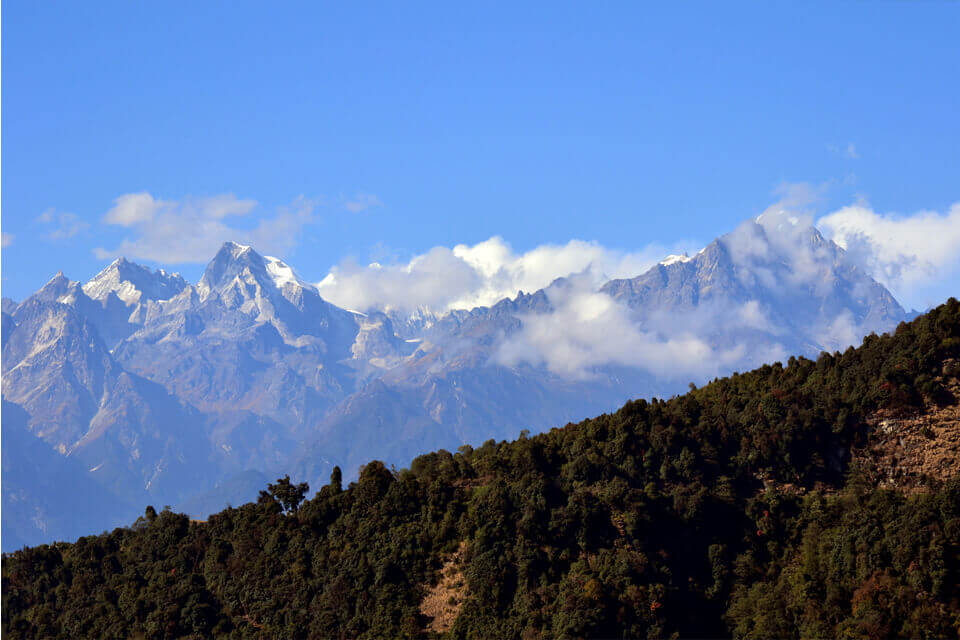
Sikkim
Introduction
It was the fourth day of our Sikkim tour. The date was March 8. On March 7, at 730 PM, we reached Kaluk’s Ghonday resort. The readers who are regularly reading the stories of my Sikkim tour have known from part 3 of my story that Google maps stopped working due to network weakness. So we lost our way, and we faced difficulties reaching Kaluk. There is a saying in Hindi, ‘Raat Gai Baat Gai,’ which means what happened had happened.
So anyway, when you go out for a change from everyday life, you feel cheerful. And if that ‘change’ brings you amid the mountains, it is like icing on the cake.
The day begins:

I woke up early in the morning to the knock on the door. Yes, the resort staff came to serve tea on a beautiful cup plate. So I opened the balcony door with a cup of tea. Son Saikat also joined me.
The wonderous nature was at grace and greatness. I need not tell it over and over again. As you know, I was at Hill station, Sikkim. I gave you a fair description of nature in the bound of hills of Kanchanchungha in the earlier three parts of the story.
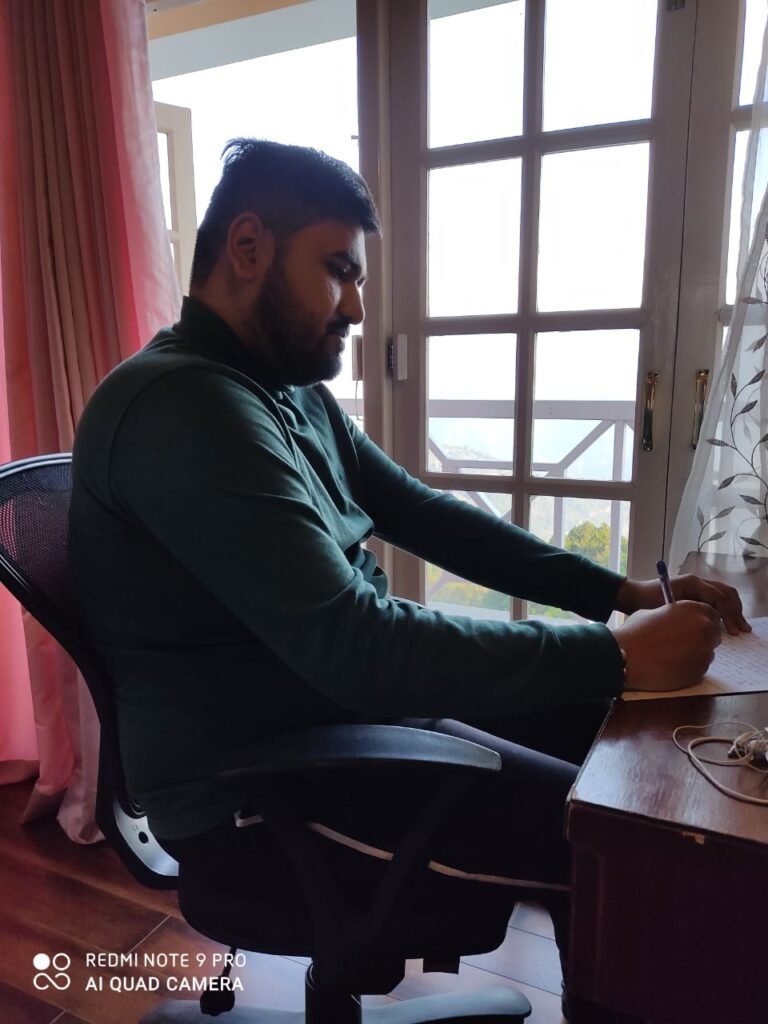
Still, I can’t stay by not telling you my feelings for hills. So, what could be better than that? If it was morning, you woke up, and you were standing on the resort’s balcony with a cup of tea, and afar mountain Kanchunhgha stared at you with a smile. Then, I always felt the beautiful rings of mountains telling me in a whisper, “come nearer me, come nearer me, come & enjoy my beauty.”
Let me tell you about my suite in Ghonday resort. An office friend of mine told me about this resort. He also suggested staying in the Kanchanchungha No.5 suite on the resort’s top floor. Because from its balcony, you get the perfect view and feel of Kanchanchungha’s hill range. So we did as we thought.
My friend booked the suite in advance, which cost us Rupees 3500 each day, excluding meals and breakfast. Well, I felt it was a bit pricy. But sometimes, some compromises have to be made to observe nature closely.
Indeed the mountains looked terrific from the resort’s balcony. My son Saikat got a new hobby of vlogging. How could he miss such a stunning view here? So he did what is called, in journalism jargon, ‘PieceTo Camera’ (PTC) on the balcony.
The Sightseeing begins:
i) Rinchenpong Monastery
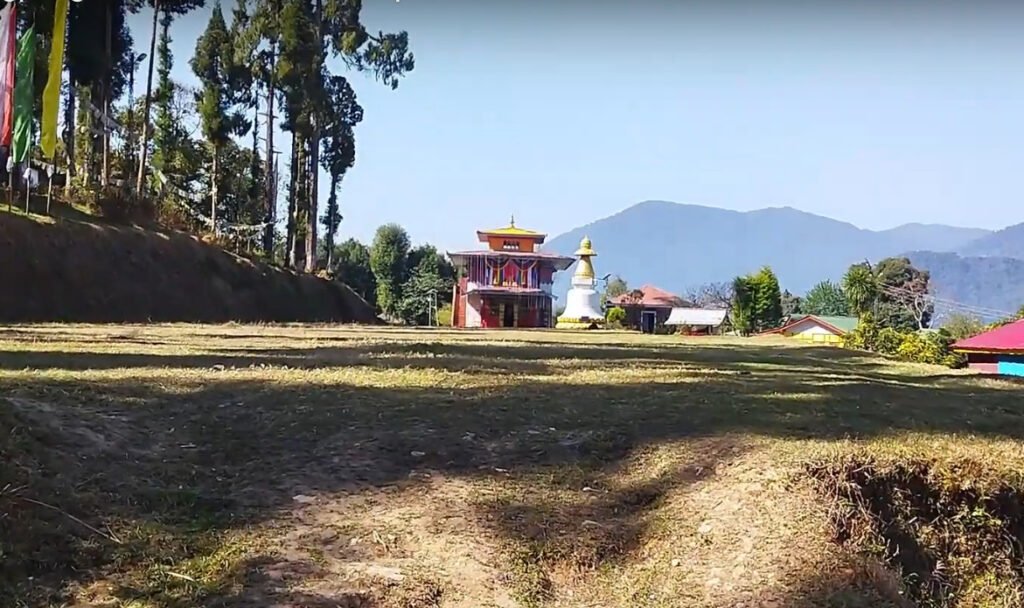
We took breakfast in the dining hall and then went out Sightseeing. The first spot was the Rinchenpong Monastery. The Monastery stands in solitude at 5500 feet, overseeing the twin villages of Rinchinpong and Kaluk.
It has one unique thing. In other Monastery, you will see only the Buddha statue in a meditative posture. So here also, Buddha is shown meditating. But at the very same point in time, he is embracing a woman. And you know monks are celibate. So there is no role for a woman, is there. But here, it is different. The posture signifies the union of males and females. So you don’t find such a Buddha statue in any other Monastery. Also, it is the third oldest Monastery in Sikkim, which makes it very special.

But the monk Mikmer of the Rinchingpong Monastery had something else to tell that skeptic me. Still, as a tourist, I also listened to him. He said that before Gautam Buddha, there was another Buddha called Primordial Buddha. The girl and boy in the statue symbolize husband and wife, and in Buddhism called Yab-Yum posture. It does not indicate the union of males and females, and the physical distance between them is like heaven and hades, affirmed the monk. The girl who is there in the idol is angry. The idol’s posture symbolizes the male cooling her anger, added the monk Mikmer.
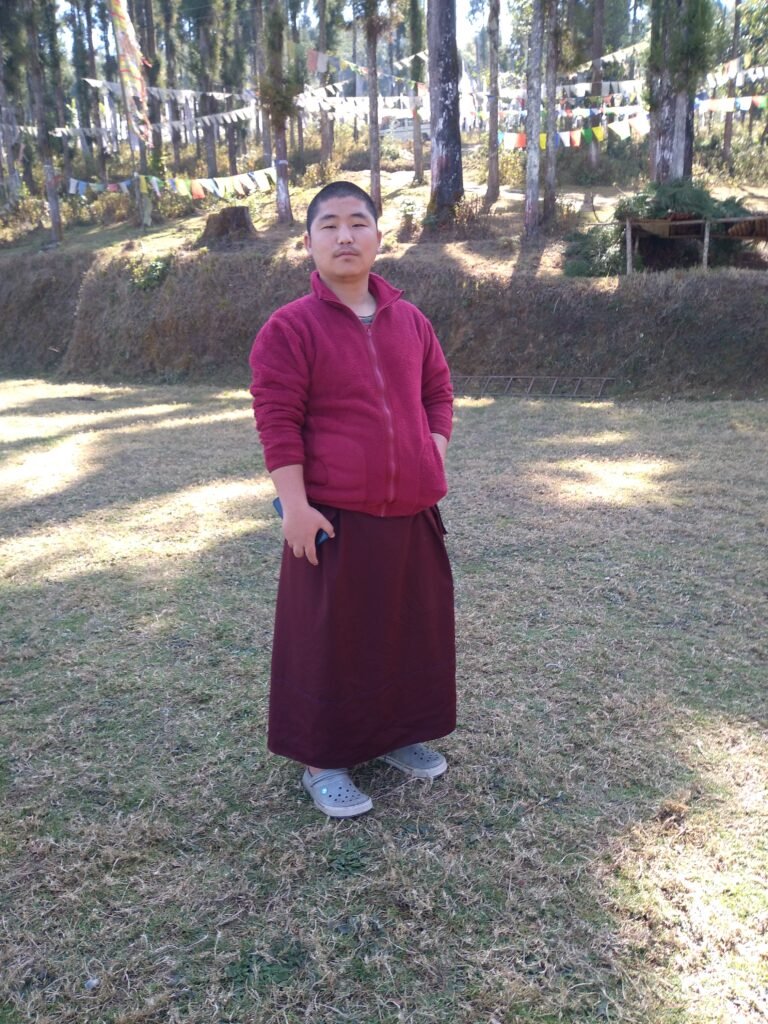
But I could not find any document on the internet about such an idea monk had. Further, he said a pillar adjacent to the Monastery is called Chuten in Buddhism. Chuten is built in memory of a Buddist monk who died.
So the reader may choose the story they believe.
Deplorable Roads
The approaching route to the Monastery was so rough that the vehicle shook. So also, we tumbled inside our Xylo. I wonder why the Sikkim government is indifferent to the roads near the tourist spot. I feel it’s better to go on a hike there instead of the vehicle.
ii) Poison Lake
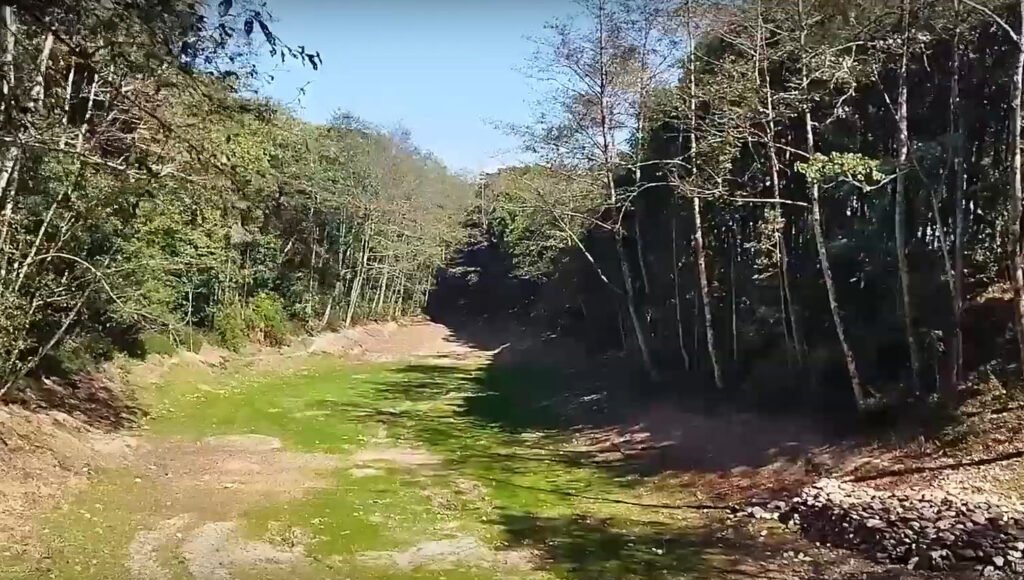
If you go near Poison lake on today’s date, you will not find any lake traces because the lake or river beds dried up and became green due to natural plantation growth. But once upon a time, there was a poison lake here. But there is no defined road to reach there. An undefined uneven, sloppy path could lead you to poison lake. But it is advisable not to go there for older or senior citizens having leg problems. Observe the view from the main road if you are not so confident about going there.
The history of Poison lake is of great interest. The British Army had sent its army in about 1860 to capture Richingpong. The people of Sikkim felt weakened in front of the mighty British army equipped with terrible weapons. The local Lepcha people had seen that the British Army was setting up its camp. The lake [Poison] was the only drinking water facility here in those days. Then Lepcha people mixed some herbs from the Himalayas in the water to poison the lake water.
Half of the British died from drinking the poison water, and the remaining army fled the place out of fear. After that, the lake got the name Poison lake.
iii) British Duk bungalow
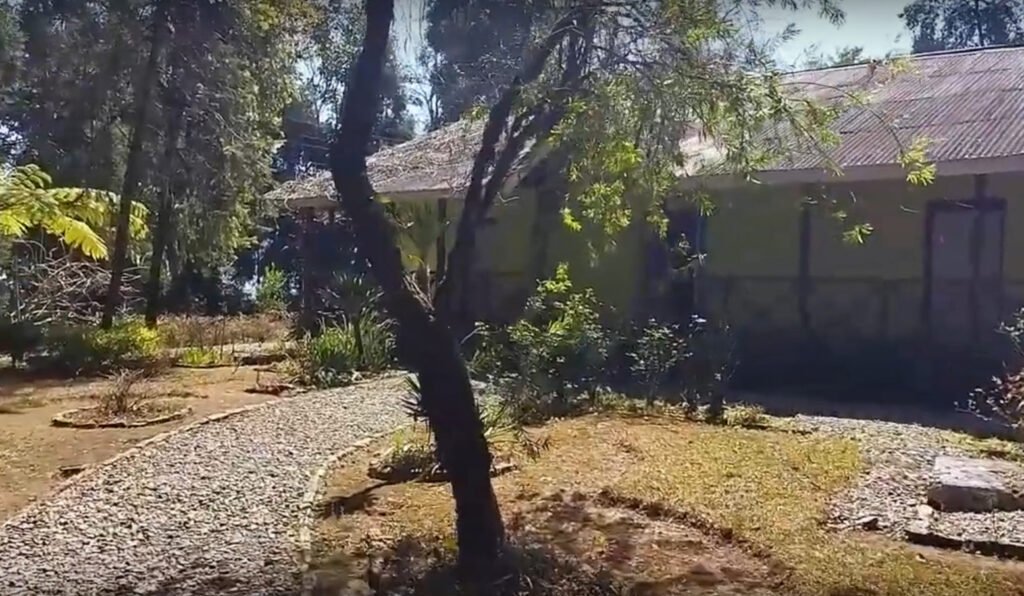
We had to go back to the resort. But on the way back, we saw a bungalow. Out of curiosity, we entered without any permission by opening the gate. We met with in-charge Lama. He said it was a British Bungalow made in 1830. British officials stayed here. “Here in this Bungalow came Rabindra Nath Tagore once. He wrote some verses here praising nature. But now we do not have evidence as the records are misplaced”, said Lama.
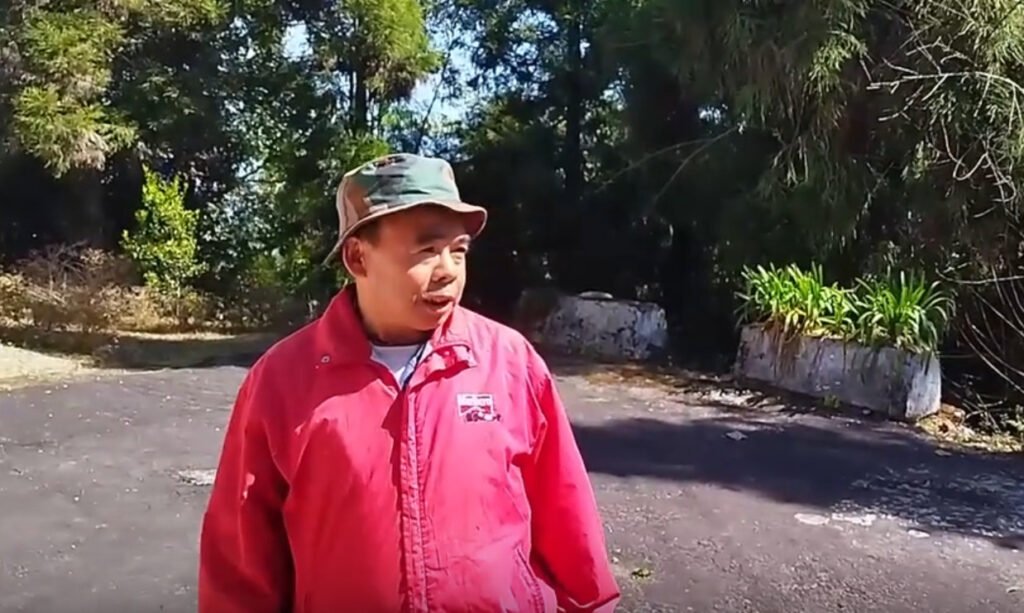
“It is now under PWD. Government officials coming on temporary duty stayed here. So even the tourist can also stay here. But for this, you have to book from Gangtok’s PWD office,” informed the caretaker Lama. Lama also took us inside and around the guest house. To get to know the detail of the places we visited on the fourth day of March 8, you may watch the video uploaded by Saikat at the end of the story.
Conclusion
The next day, on March 9, we moved to another paradise of Sikkim, Heepatal/Chaya Tal. But that story will come up in the next few days. So if you like my Sikkim tour series stories, then keep an eye on the subsequent publication of the digital magazine Unveil. Press.
.












































